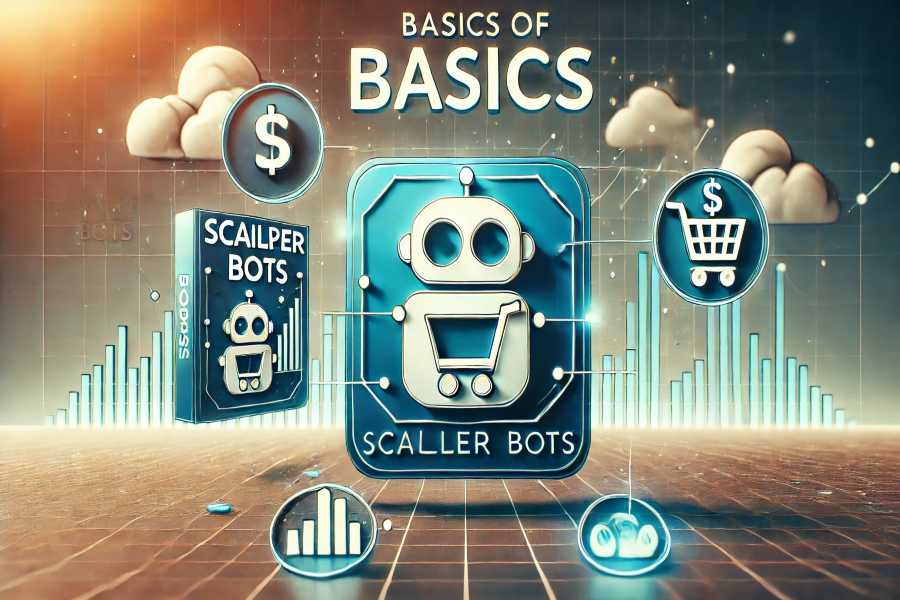Board games, graphics cards, concert tickets, stocks, and almost anything else can be bought online. And when something can be done online, it means it can be automated. Automatic purchases, performed by scalper bots, are notorious for creating shortages and enriching those who use them.
No matter which side you are on, it’s crucial to understand at least the basics of how scalper bots work.
What Is a Scalper Bot?
Scalper or scalping bots are software created to automate the process of purchasing goods or services in bulk. Depending on the bot, the process might be complete or partial. For example, some bots can take care of every step – from account creation and item selection to checkout and handling the money transfer.
Other scalper bots will need you to create an account upfront, and then the purchase will be made. In all cases, the speed of a scraper bot can be tens or even hundreds of times faster than that of a human shopper.
That’s why high-demand goods can be automatically purchased by a bot in mere seconds while real humans don’t have any chance of fighting back. For example, some Nvidia cards were so unavailable for common users that the company had to announce a public apology.
But scalper bots aren’t necessary as they can be put to good use as well. Not to mention, other similar types of bots can automate many complicated online tasks, leaving humans to more creative ones.
You can program a scalper bot yourself if you have the knowledge. However, the online communities creating and distributing such tools are advanced enough that it’s cheaper to buy them off of discord groups or black hat forums.
Besides, you will need to constantly update the tool to make it fit to bypass various protection measures implemented by target websites. It simply makes more sense to choose a type of scalper bot that is already pre-made.
Types Of Scalper Bots
Scalper bots may come in a variety of forms, mainly based on the goods they are made to purchase in large quantities. The underlying principles and the code remain as described above. However, different markets, websites, and goods might require some adaptations.
Stock trading bots, for example, are one of the most popular types of scalper bots, and they are legal and even encouraged in the stock exchange markets. This special software is designed to sell or buy certain stock once the required conditions are met. Price increases or decreases, overall stock performance, or other economic factors can be accounted for,
The main benefit of such bots is that they not only increase efficiency but also eliminate manual errors and other mistakes that human traders may make. They can strictly follow the rules and not give in to emotions or irrelevant external factors, which, in the long run, is a better strategy.
Sneaker bots are another great example of scalper bots made for a specific function – to purchase high-value, limited-edition sneakers for a low price. There are a lot of sneaker fanatics, called sneakerheads, and a lot of money to be made when purchasing them.
Online sneaker vendors do everything they can to stop these bots, so they have become extremely sophisticated. Some, such as the NSB bot, can automatically create an account, collect data about new drops, and imitate a human buying sneakers. These bots can purchase sneakers in seconds and make a huge profit for the owner.
Amazon or eBay bots are the most common among the more universal Automated Checkout software solutions. Many e-commerce websites use the same platforms to sell their goods. That’s why some bots specialize in certain platforms, such as Shopify scaler or Woocommerce bots.
These bots are tried and tested to work on their dedicated websites and have proven to yield good results. You can create your own custom bot from scratch, but it won’t last long since e-commerce and other websites are fighting against them.
Fight Against Scalper Bots and Proxies
Most of the defenses that websites impose against scalper bots and bulk purchasing, in general, are based on checking the IP address. The IP address is a digital passport of sorts, which carries your approximate location and the name of your internet service provider. Together with some other information about your device, it’s more than enough to identify you.
Identifying each visitor allows them to register their actions and check if there is any suspicious activity. For example, making too many purchases from one IP address or checking out too quickly. If such activity is detected, the IP address will be restricted with various tests, such as CAPTCHA, or simply banned.
That’s why almost all automated checkout software requires proxy servers to run. These devices act as intermediaries receiving your network requests and then proceeding on your behalf. If you connect a scalper bot to a proxy, its IP address will be hidden and can be changed with another at any time.
A static residential proxy is the best choice for bulk purchasing because you get a legitimate IP address from a residential area and can expect to use it for a long period. Some cheaper proxies will change your IP address after some time. It might be a benefit for some other use cases but not for bulk purchasing.
If your IP changes while your bot is still in the checkout after login, you might get your account banned. E-commerce stores check every visitor for suspicious activity, and changing your IP location in the middle of a purchase is definitely a red flag. Static residential proxies will help you to avoid it.
Conclusion
We have only scratched the surface of what scalper bots are and what using them entails. There are also a lot of technical details that are important to know if you want to use one. However, one thing is clear – Scalper bots are efficient tools that won’t be put down without a long fight.












































Leave a Reply